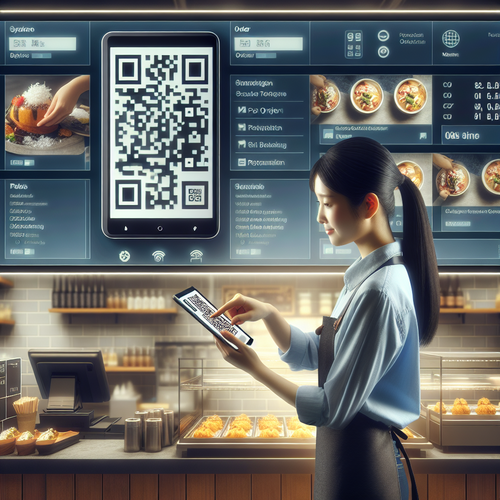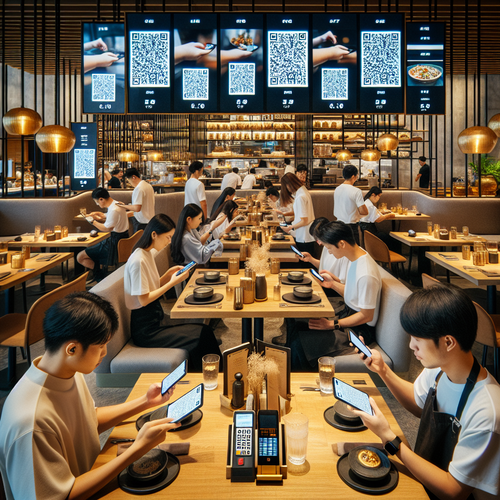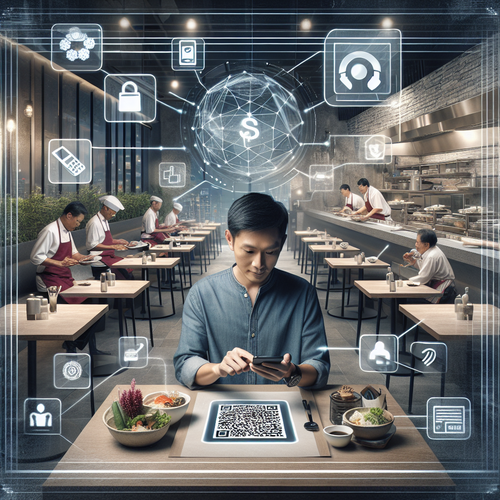Panas dari pers.
Tetap dalam lingkaran dengan klikit dan industri F&B – temukan cakupan pers tentang berita dan wawasan terbaru.

Panas dari pers.

Boost Order Accuracy and Payment Efficiency: Integrating QR Code Ordering with Your Restaurant POS
The Singapore F&B landscape is rapidly evolving, with restaurants embracing technology like QR code ordering to meet growing customer demand for contactless and efficient service. By integrating QR code ordering with restaurant POS systems, operators can automate order flow, reduce errors, and streamline payment reconciliation — transforming their operational efficiency. Understanding QR Code Ordering in Singapore’s Restaurant Landscape QR code ordering has become a popular solution across Singapore’s food scene, accelerated by food delivery platforms such as GrabFood and Foodpanda. Consumers appreciate the convenience of scanning a QR code to browse menus, place orders, and pay directly from their smartphones without physical menus or long waits. This contactless ordering method not only enhances customer experience but has driven restaurants to adopt integrated systems combining QR ordering with POS, enabling seamless and efficient restaurant order management with QR code and POS. Key Benefits of Integrating QR Code Ordering with Your POS System Integrating QR code ordering with your restaurant POS unlocks several operational advantages, from automating order flow to enabling real-time tracking and payment reconciliation. Automating Order Flow to Reduce Order Errors Orders placed via QR code immediately feed into the POS and order management system (OMS), eliminating the need for

The Complete Guide to Contactless QR Code Ordering Systems and POS Integration for F&B Businesses
Contactless ordering has rapidly become essential in Singapore’s F&B sector, propelled by consumer demand for safer and more efficient dining experiences. A contactless QR code ordering system, when fully integrated with your POS, not only enhances order accuracy but also accelerates payment processes and improves overall guest satisfaction. Understanding Contactless QR Code Ordering Systems Implementing a contactless QR code ordering system modernizes how customers interact with your restaurant, combining convenience with hygiene and efficiency. How QR Code Ordering Works Guests scan a QR code displayed on the table or takeaway packaging using their smartphones. The digital menu loads instantly, allowing customers to browse items visually. Customers select and customize orders, then submit directly through the interface. Payment is processed online or at checkout, completing the transaction without physical contact. Benefits for F&B Businesses in Singapore Reduced manpower needs: Less reliance on waitstaff for taking orders. Faster service turnaround: Orders route immediately to the kitchen. Improved guest safety: Minimizes physical contact, vital in post-pandemic Singapore. Cost-effective updates: Easily modify digital menus without physical reprints. Examples include hawker centers and cafes optimizing peak hours and reducing queue times. The Role of POS Integration in Enhancing Order Accuracy and Speed Connecting your QR

How Singapore Restaurants Can Integrate QR Code Ordering with POS for Seamless Payments and Efficient Order Flow
In Singapore’s fast-evolving F&B landscape, integrating QR code ordering with your restaurant POS system is no longer just an innovation—it’s becoming a necessity. This integration enables seamless payment processing, efficient order flow automation, and a superior contactless dining experience. Understanding QR Code Ordering and POS Systems in Singapore QR code ordering allows customers to scan codes at their tables using smartphones to browse menus and place orders directly. When integrated with a restaurant POS system, these orders flow straight into the kitchen and billing systems, eliminating manual entries. Restaurant POS systems in Singapore range from basic order management tools to comprehensive platforms integrating inventory, staff, and payment management. Popular payment methods supported include local options like PayNow and GrabPay, which are widely adopted for their convenience among Singaporeans. Benefits of Integrating QR Code Ordering with Your POS System Integration brings multiple advantages to both restaurant operations and customer satisfaction. Reducing Order Errors and Cancellations Integrating QR code orders directly into POS minimises human error from manual input, significantly reducing order inaccuracies and cancellations. This improves kitchen efficiency and customer satisfaction. Enhancing Payment Efficiency with Local Payment Options Integration supports seamless payment processing by connecting the QR ordering system with PayNow,